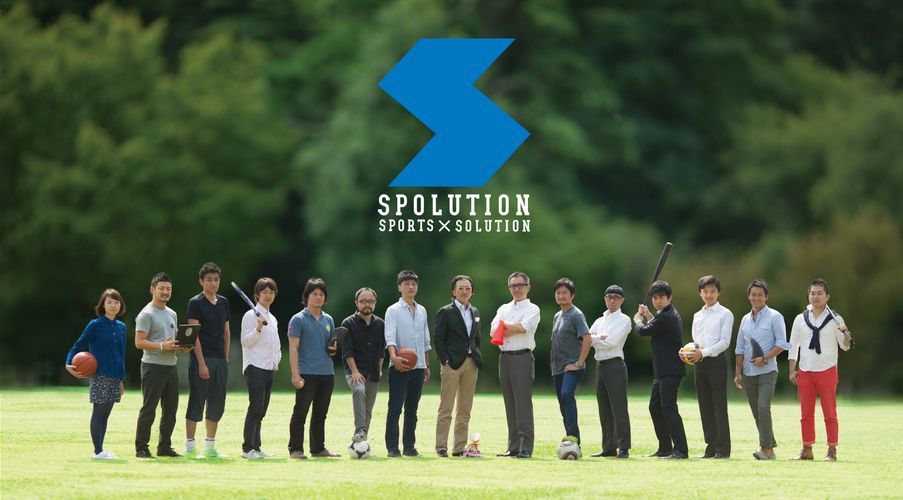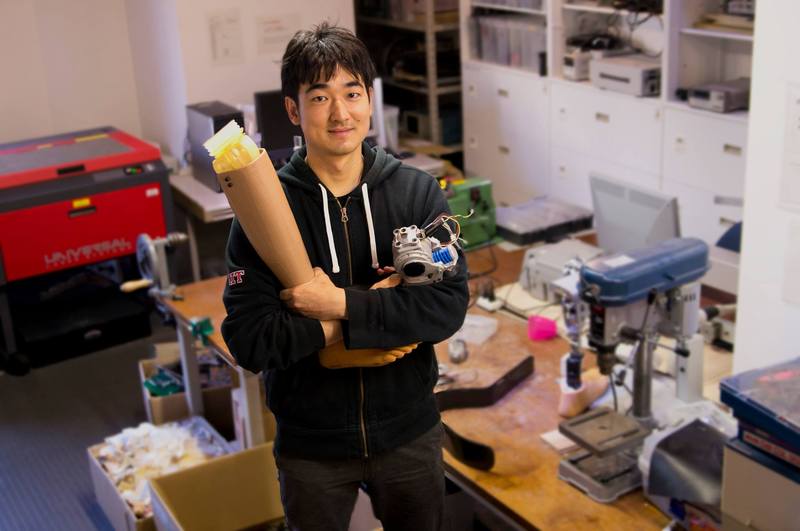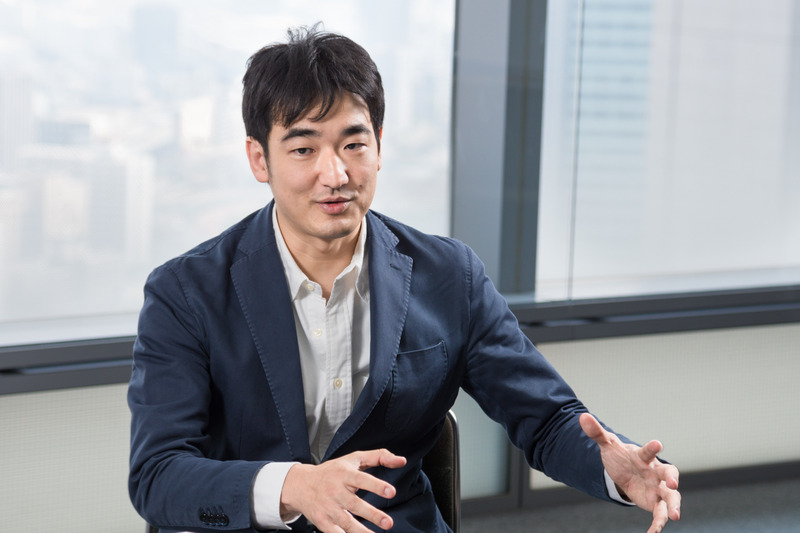The SPOLUTION team is a solutions unit that tries to create new business opportunities by viewing sports content not just as media slots, but also as solutions. Team members will introduce future sports-related business opportunities from their respective perspectives in a relay column format.
I'm Keisuke Goto, a member of the SPOLUTION team.
In this column, we welcome Ken Endo, Japan's leading prosthetic leg designer, for a dialogue titled [Sports × Handicapper].
My first encounter with Mr. Endo was two years ago at a talk event he presented at the MIT Media Lab. His presentation was incredibly fascinating, and I immediately approached him at the reception party (laughs). We hit it off, and I started visiting his lab. Now, we're even collaborating on several projects together.
We spoke with Mr. Endo about prosthetic legs, the environment surrounding them, and the 2020 Tokyo Paralympics. We heard some very interesting insights, including the idea that "By 2020, the Paralympics might surpass the Olympics!?"
Ken Endo
Associate Researcher, Sony Computer Science Laboratories
Engaged in analyzing human physical capabilities and developing lower-leg prosthetics at the Biomechanics Group, MIT Media Lab. Served as an instructor at MIT D-Lab, teaching courses on prosthetics and orthotics for developing countries. Selected for MIT Technology Review's "35 Innovators Under 35" (TR35) in 2012. In addition to research on physical capability enhancement using robotics, he serves as the representative of D-Leg, which aims to develop and disseminate prosthetics for developing countries, and as the representative of See-D, which hosts workshops and contests for manufacturing businesses targeting developing countries. Furthermore, in May of this year, he co-founded Xiborg Inc. with Olympian Dai Tamesue and others, assuming the position of CEO.
Goto: First, please tell us about your research, Endo-san.
Endo: At Sony Computer Science Laboratories, we primarily research three types of prosthetic legs.
The first is affordable prosthetic legs for developing countries. They aren't just inexpensive; they're designed to be manufactured locally using local materials and industries. We aim to create prosthetics that involve the local community, generating employment and improving quality of life.
The second is robotic prosthetic legs. These incorporate motors and sensors to replicate walking patterns close to those of able-bodied individuals.
The third is prosthetic legs for athletic competition. With 2020 as a key target, we want to create prosthetic legs that enable the fastest running speeds in human history, where Paralympic records could surpass Olympic ones.
Goto: I'd like to hear more about these three types of prosthetics. First, could you tell us about the environment surrounding prosthetics in developing countries?
Endo: People want prosthetic legs of the same quality as those in Japan, but for locals, they are extremely expensive. In developing countries, those needing prosthetics often belong to impoverished communities. People already struggling financially lose a limb, making their lives even harder. They want a prosthetic leg, but they have no money. Yet, the reality is they need employment more than a prosthetic to survive. Our main research theme is addressing these social issues – problems that prosthetics alone cannot solve – through prosthetic development.
Goto: I've heard that standard prosthetic legs in developed countries cost hundreds of thousands of yen, depending on the limb and design. On the other hand, Japan has an insurance system.
Endo: That's right. Ideally, establishing a social insurance system in developing countries through top-down measures would be best. But I don't think that's the approach an engineer like me should take.
What I can do is build things together with local engineers. And then, improve local skills so that local engineers can build things on their own. I believe that leading to improved quality of life is the output my engineering seeks.
Goto: That's amazing. It's not just about building things, but also nurturing engineers.
Endo: Yes. More than just training, in my case, I focus on walking through the creation process together, step by step, and building a foundation so they can create without me. For example, in India, I was literally right there with them at first, but now they can handle everything from fitting to walking experiments without me.
Goto: How long did it take for them to become fully self-sufficient locally? About a year?
Endo: No, no, much longer. It took about three years.
Goto: I see. Now, regarding the second robotic prosthetic leg—essentially, it's a prosthetic designed to enable people to move like humans, right? I imagine this technology also has applications beyond just people with disabilities, such as supporting the mobility of elderly individuals. Could you elaborate on that aspect as well?
Endo: Yes. First, walking is probably the most common action humans perform besides sitting or lying down. Also, human muscles and bones are incredibly well-designed—I think they're practically optimized for bipedal locomotion. Therefore, moving around with wheels, while efficient, significantly lowers quality of life. That's why we aim to create prosthetic legs that restore walking function.
Goto: My grandmother also found walking increasingly difficult, so she gradually stopped walking. And precisely because she stopped walking, various symptoms worsened. That's why I felt technology supporting independent walking and movement—not electric wheelchairs—is crucial. In Japan, facing an aging society, this will become indispensable technology.
Endo: Goto-san, since we talk regularly, you probably understand this well, but I think most people don't readily connect prosthetic legs with elderly walking. They see prosthetics as something for people who have lost a leg. Many elderly people think it has nothing to do with them. But functionally, both represent a loss of the ability to walk. In terms of using technology to enable walking again, whether it's for the elderly, someone missing a leg, or even able-bodied people, the approach is fundamentally the same for me. That's why I approach prosthetic limb development as technological advancement for the human act of walking, and I believe that's a crucial perspective.
Goto: That's right.
Endo: I was planning to bring this up later when discussing sports prosthetics for the Paralympics, but I'm launching a company called Xiborg. We're doing it with 400m hurdler Tamesue Dai and product designer Sugihara. The concept isn't just to be a company making prosthetics for people with disabilities. We want to be a company that can give the joy of movement to everyone, regardless of whether they have a disability or are able-bodied.
It's a bit vague, but I think humans inherently feel joy in movement. Looking back at history, animals and fish often moved when facing danger, but as humans developed intelligence, natural predators gradually disappeared. So what did humans do? They began seeking entertainment through moving their own bodies. The Olympics are a perfect example of that. That's why I believe humans have always felt a fundamental joy in physical movement.
Goto: Interesting! It really shows how important it is to move your own body by your own will. Getting back to the topic, could you tell me about the technology you're developing for the elderly?
Endo: For example, we're considering devices that help muscles regain their original strength. They support walking with motors, but as you get used to walking, the output gradually decreases, so you can eventually walk using only your own strength.
Goto: That sounds similar to an electric assist bicycle. It uses electric power to reduce the initial load, then you pedal on your own once you get going.
Endo: Exactly. To elaborate a bit more, my approach involves detecting the exact moment the foot touches the ground during walking and using sensors to recognize where the person's center of gravity is relative to the prosthetic leg. Then, the motor activates at the moment of push-off.
There are other approaches too, like using EMG signals or brainwaves. The challenge is that humans vary so much. You can't use the same motor with the same output for everyone. We need technology that bridges those individual differences.
Goto: In terms of entrusting your body to it, is it like a Segway (electric two-wheeled personal transporter)?
Endo: Yes. Once you get used to it, it probably starts to feel like an extension of your body, right? That's because the overall design is built with an interface that harmonizes with the body. So, I believe that if we design prosthetic legs properly, even just through mechanical interaction, they could become so seamless that they feel like a natural part of the body.
Next time, we finally dive into the 2020 Tokyo Paralympics. Will the Paralympics surpass the Olympics!? Stay tuned!
★What is the "Sporolution" Team?
This is an internal unit within Dentsu Inc. that approaches sports content not merely as "media assets," but as "solutions" to solve business challenges and project issues, and plans accordingly.
The team brings together diverse talents including strategic planners, promotion planners, copywriters, art directors, technologists, consultants, and producers, all with extensive experience in sports planning. Through our Solution Director system, we provide not just "ideas for expression," but also "ideas for solutions" in a one-stop service.









